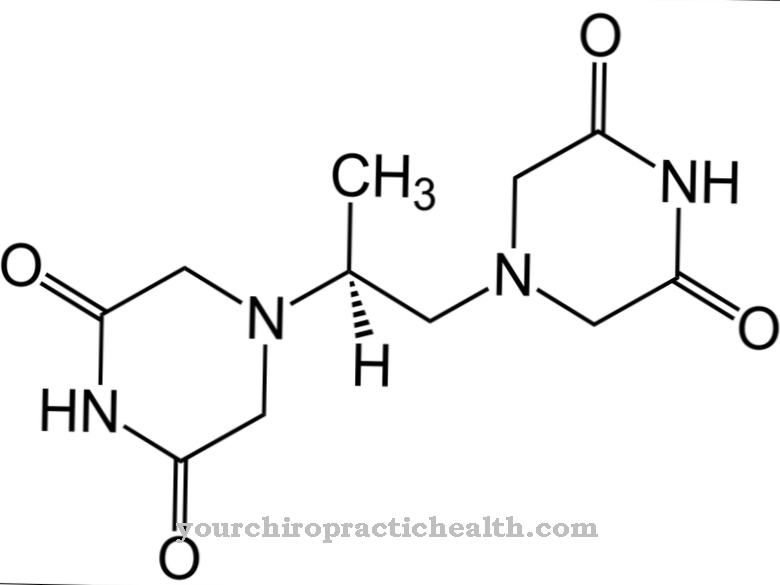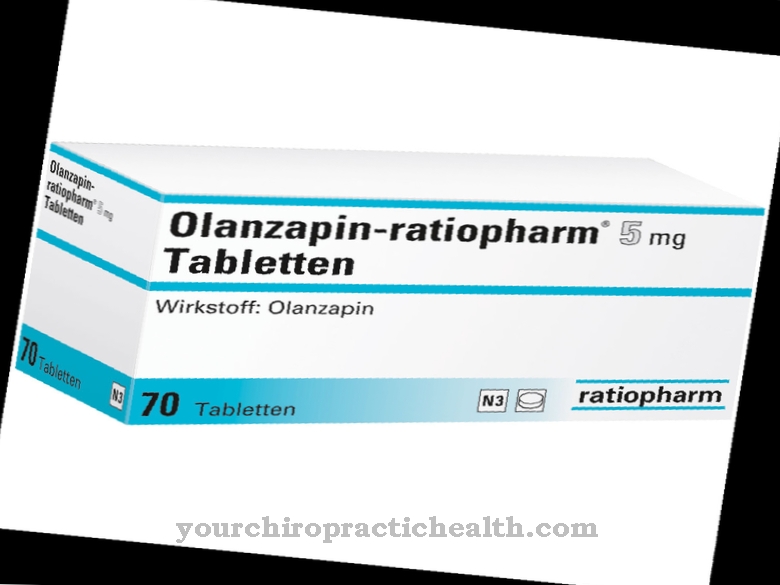The active substance Thioridazine is a neuroleptic. It can be used to treat schizophrenia and other mental illnesses.
What is thioridazine?

The antipsychotic thioridazine is part of the active ingredient group of neuroleptics. From a chemical point of view, it is one of the phenothiazines and is used as a low-potency neuroleptic.
Thioridazine is used to treat chronic forms of schizophrenia as well as other psychoses associated with states of excitement and psychomotor restlessness. As a rule, however, the drug is only used if the treatment with other drugs cannot be achieved.
Thioridazine was patented in 1966 by the Swiss pharmaceutical company Sandoz, which is now a subgroup of Novartis AG. Thioridazine was given the name Melleril® at the time. In the present it is still used as a generic.
The active ingredient is usually used as tartrate or water-soluble hydrochloride. However, Melleril was withdrawn from the market by its largest manufacturer Novartis in the United States and Europe because it can cause dangerous cardiac arrhythmias.
Pharmacological effect
Neuroleptics are used to treat schizophrenia. They have calming and antipsychotic properties. The psychological disorders in schizophrenia are primarily caused by messenger substances such as serotonin and dopamine. For this reason, it is necessary to inhibit the corresponding receptors within the central nervous system. For this purpose, the serotonin or dopamine receptors are bound with the help of different drugs. In this way they regulate the influence of the messenger substances as antagonists on the patient's psyche.
Thioridazine is also one of the dopamine antagonists. The mode of action of the drug is based on the blockade of the dopamine receptors, which in turn has an inhibitory effect on the effects of dopamine. In addition, the neuroleptic suppresses the further release and reproduction of dopamine. However, the calming effects of thioridazine are significantly stronger than its antipsychotic properties.
Low-potency neuroleptics such as thioridazine are not suitable for the sole therapy of psychoses. With a higher dose, other receptors such as histamine receptors, adreno receptors and MACh receptors are activated, which in turn triggers increased side effects.
A previously unknown effect of thioridazine has shown recent research in India. The neuroleptic proved to be successful against strongly resistant bacterial strains of the Mycobacterium tuberculosis type, as the active ingredient also has antimicrobial properties. Furthermore, thioridazine can be used as a functional inhibitor of acid sphingomyelinase (FIASMA).
Medical application & use
Thioridazine is given to treat schizophrenia. The remedy is used to combat psychoses, personality disorders, hallucinations and delusions. Thioridazine is also suitable for treating states of agitation. However, the neuroleptic is usually only used as an accompanying drug or as an alternative when common drugs fail.
Thioridazine may also be suitable for treating tuberculosis. However, approval for this purpose has not yet been granted.
If the neuroleptic is dosed according to the instructions, it is generally considered to be well tolerated. It is usually taken in the form of film-coated tablets. A liquid dosage form is also available for seniors.
You can find your medication here
➔ Medicines to calm down and strengthen nervesRisks & side effects
The use of thioridazine can have undesirable side effects. The most common side effects include drowsiness, dry mouth, dizziness, blurred vision, fluctuations in blood pressure and a stuffy nose. In women, milk can sometimes flow from a non-nursing breast.
Other conceivable side effects include twitching, cramps, tremors, motor disorders, rigid muscles, agitation, paleness in the face, allergic skin reactions, hives, sensitivity to light, a swollen parotid gland, a rise in body temperature, problems with breathing and painful permanent erections of the penis without sexual motivation occur.
In addition, the affected people are often unable to take a quiet sitting position. In rare cases, depression, nightmares, a neuroleptic syndrome, circulatory problems, an intestinal obstruction as well as impaired consciousness or a coma occur. In the worst case, the patient can even die suddenly.
If there is hypersensitivity to thioridazine or if the patient suffers from pronounced cardiac arrhythmias or strong light sensitivity, the use of the neuroleptic must be avoided. A combination with medicinal products which inhibit the cytochrome P4502D6 isoenzyme is also not permitted. These can be beta blockers, tricyclic antidepressants, or serotonin reuptake inhibitors such as paroxetine or fluoxetine.
Exact studies on the use of thioridazine during pregnancy are not available. However, it was found that the neuroleptic can penetrate the placenta. For this reason, it is recommended to carefully weigh the risks and benefits before taking.
In the last part of pregnancy there is a risk of side effects for the baby. These manifest themselves in the form of difficulty breathing, shakiness, eating disorders or sleepiness. In addition, thioridazine can penetrate into breast milk, which also carries the risk of side effects in the child. Therefore, if thioridazine therapy is necessary, weaning should be carried out beforehand. Thioridazine is only used in children when no other suitable medication is available.
The simultaneous administration of thioridazine and other drugs can lead to disruptive interactions. For example, the beta blocker propranolol, the blood pressure drug pindolol and antidepressants such as fluvoxamine cause thioridazine to slow down the metabolism considerably. As a result, there is a risk of conduction disorder in the heart, which in turn can lead to serious cardiac arrhythmias.



























